Celtic Cross Spread
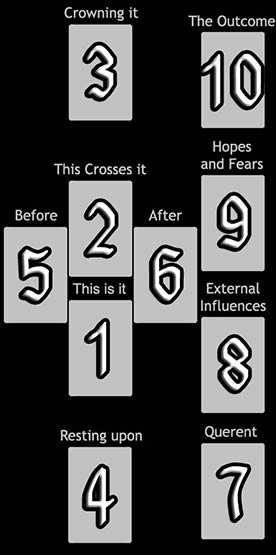
Difficulty: Average
This is probably the most well-known tarot spread. A good, basic spread for beginners to practise with, the Celtic Cross is useful for questions of all types. In this spread, it can be helpful to notice the relationships between the pairings of cards #5 & #9, #1 & #2, #3 & #4, and #6 & #10.
- The significator epitomizes what the reading deals with, the initial situation.
- An added impulse that compounds the significator, which may be either complimentary or contradictory.
- This is what is consciously known (thoughts).
- Unconscious driving forces that may not be known fully (emotions).
- The immediate past regarding the current situation.
- The first future card indicates the immediate future.
- This card represents the reader and their attitude towards cards #1 and #2.
- The external influences, the places and people which influence the topic.
- This tarot card suggests expectations; what is secretly hoped for or feared.
- The second future card reveals the long-term outcome.
Your Celtic Cross Reading
The Crown |
The Outcome XX – Judgement
External Forces 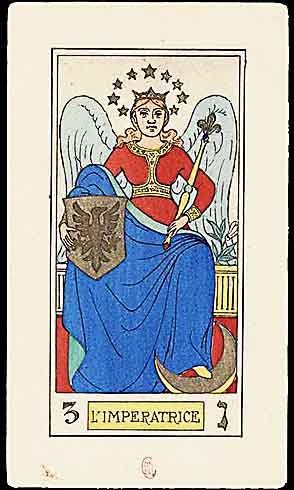 III – The Empress
|
||
The Recent Past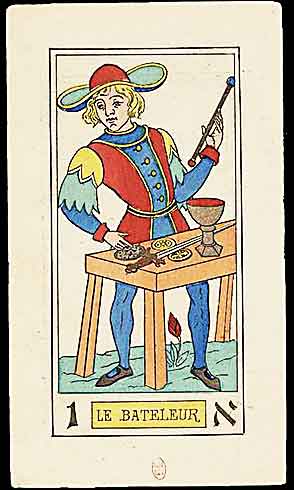 I – The Magician |
The Crossing Card
|
The Future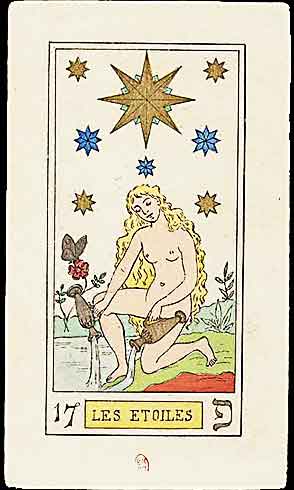 XVII – The Star |
|
|
|||
The Significator represents what the main theme of the reading deals with, the initial situation.
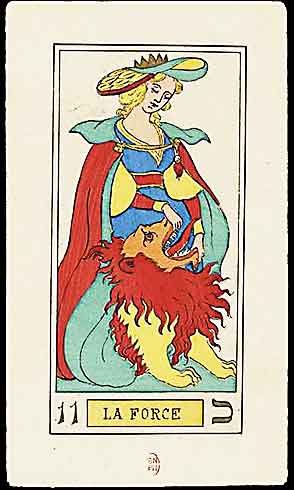
XI – Strength
Strength symbolises inner strength, courage, and emotional mastery. It represents the power of compassion and grace in overcoming challenges, rather than brute force.
Symbolism: A woman calmly subdues a lion, symbolising the triumph of inner strength over raw power. Her serene expression and gentle hands show mastery through patience and understanding.
In Relationships: Strength to overcome emotional challenges through understanding and patience.
In Work: Success through resilience, determination, and tact, not through force.
Spiritually: Mastery of inner impulses and alignment with higher virtues.
When ill-dignified: Weakness, impatience, or misuse of power in challenging situations.
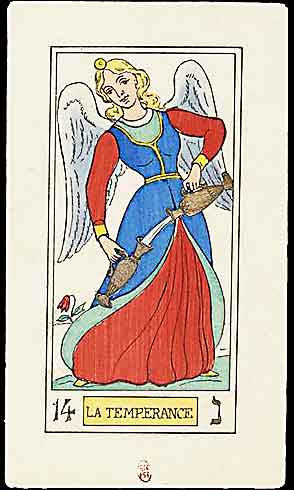
The Crossing Card denotes an added impulse that compounds the initial card, whether complimentary or contradictory.
XIV – Temperance
Temperance represents balance, moderation, and the art of harmonising opposites. This card suggests a period of a careful blending of energies, creating harmony between diverse aspects of life.
Symbolism: Temperance is shown pouring liquid between two cups, symbolising the blending of forces or energies. Her wings suggest a spiritual connection, and her alchemical knowledge signifies a harmonious outcome. The card teaches the importance of moderation.
In Relationships: A balanced, harmonious relationship or the need for patience and moderation in love.
In Work: A time to blend different skills or approaches to find success. Collaboration and diplomacy are key.
Spiritually: A call for balance, peace, and alignment between the spiritual and material realms.
When ill-dignified: Excess, imbalance, or an inability to find middle ground.
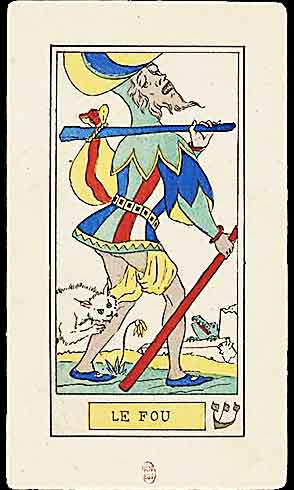
The Crown stands for what the asker is aware of consciously.
0 – The Fool
The Fool represents freedom, spontaneity, and new beginnings. This card signifies the start of an adventurous journey, full of potential but also uncertainty. He reminds us to embrace the unknown with optimism and an open heart.
Symbolism: The Fool carries a staff and a small sack, symbolising untapped potential and the lessons to be learned. The playful animal at his feet represents instinct, loyalty, and sometimes, the forces that pull us in conflicting directions. His carefree attitude invites a leap into the unknown.
In Relationships: New romantic beginnings, playfulness, and spontaneity, but be wary of impulsive actions.
In Work: A time for exploration, openness to unconventional opportunities, and embracing the unfamiliar.
Spiritually: Embarking on a journey of self-discovery, embracing the unknown with faith.
When ill-dignified: Recklessness, lack of foresight, and the dangers of ignoring consequences.
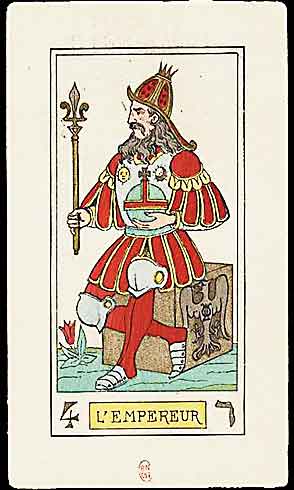
Foundation card reveals unconscious driving forces that the querent may not be aware of.
IV – The Emperor
The Emperor embodies structure, authority, and rational leadership. He embodies the power of order and disciplined action, urging us to establish strong foundations and clear boundaries in all aspects of life.
Symbolism: Adorned with a regal crown and seated on an imposing throne, the Emperor exudes control and stability. His detailed, authoritative attire and the subtle inclusion of esoteric symbols speak to a mastery over both the material and the mystical realms, emphasising the importance of balance between external order and inner wisdom.
In Relationships: The Emperor encourages healthy dynamics marked by protection, responsibility, and mutual respect. His energy suggests that strong leadership and clear boundaries can foster trust and stability within partnerships.
In Work: Success in professional endeavours comes through strategic planning, disciplined execution, and the establishment of order. The Emperor's influence highlights leadership, authority, and the ability to structure one's environment for optimal productivity.
Spiritually: Embodying a union of earthly power and cosmic order, the Emperor invites you to align your will with higher universal principles. His guidance emphasises the importance of self-discipline and integrity on the path to spiritual growth.
When ill-dignified: A misaligned Emperor may indicate an overbearing or inflexible attitude, where authority turns into domination and rigidity stifles creativity and progress.

The Recent Past represents past events and concerns.
I – The Magician
The Magician signifies mastery, skill, and the power to shape reality. This card represents harnessing resources and directing one's energies towards success. The Magician embodies the potential to manifest desires into tangible form.
Symbolism: He stands before a table with tools representing the four elements: a cup (Water), a sword (Air), a coin (Earth), and a wand (Fire). His raised wand symbolises the connection between spirit and matter, and his hat, shaped like an infinity symbol, signifies endless potential.
In Relationships: A time to use charm, wit, and initiative to build or strengthen relationships.
In Work: Opportunity, success, and the power to manifest goals through skill and action.
Spiritually: The Magician teaches the importance of intention, focus, and using one's talents for higher purposes.
When ill-dignified: Deception, manipulation, or scattered energy. Warning against using one's power for selfish gain.

The Future depicts that which lies ahead.
XIV – Temperance
Temperance represents balance, moderation, and the art of harmonising opposites. This card suggests a period of a careful blending of energies, creating harmony between diverse aspects of life.
Symbolism: Temperance is shown pouring liquid between two cups, symbolising the blending of forces or energies. Her wings suggest a spiritual connection, and her alchemical knowledge signifies a harmonious outcome. The card teaches the importance of moderation.
In Relationships: A balanced, harmonious relationship or the need for patience and moderation in love.
In Work: A time to blend different skills or approaches to find success. Collaboration and diplomacy are key.
Spiritually: A call for balance, peace, and alignment between the spiritual and material realms.
When ill-dignified: Excess, imbalance, or an inability to find middle ground.

The Querent represents the asker and their attitude towards the subject of the reading.
XVIII – The Moon
The Moon signifies illusion, intuition, and the subconscious mind. It represents the mystery of the unknown, hidden fears, and the need to trust inner guidance while navigating uncertainty.
Symbolism: The Moon is depicted with two dogs howling at the moon, symbolising the pull of primal instincts. A crayfish crawls from the water, representing the subconscious emerging into consciousness. The path leads towards a distant horizon, symbolising the journey through confusion to clarity.
In Relationships: Illusions in relationships, emotional confusion, or hidden feelings. Trust your intuition to navigate these uncertain waters.
In Work: Uncertainty or the need to trust your instincts. Hidden factors may influence the situation.
Spiritually: A time to confront fears, listen to your inner voice, and seek clarity in moments of doubt.
When ill-dignified: Deception, illusion, or being misled by false hopes or unclear situations.

External Forces represents the influence of others in your life as well as trends in your relationships with others.
III – The Empress
The Empress embodies creativity, fertility, and nurturing energy. She symbolises the fruitful aspects of life, from creativity to personal growth, and encourages abundance in all forms.
Symbolism: Adorned with a crown of stars, she sits in a lush, fertile garden, holding a sceptre and shield. These symbols signify both authority and protection. The crescent moon beneath her feet connects her to cycles of intuition and growth.
In Relationships: Nurturing love, emotional bonds, or the creation of something new in a relationship, such as a family.
In Work: Success in creative ventures, productive work, and harmony.
Spiritually: Connection with natural and cosmic cycles, alignment with divine timing.
When ill-dignified: Stagnation, overindulgence, or the misuse of creative energy.
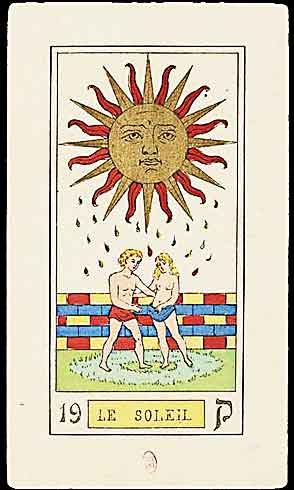
Hopes and Fears shows the expectations you have concerning the outcome of your question.
XIX – The Sun
The Sun represents clarity, success, and vitality. It signifies moments of joy, abundance, and realising one's potential.
Symbolism: The Sun shines gloriously over a youthful couple, symbolising innocence, energy, and optimism. A multi-coloured brick wall shelters them, representing protection, growth, vitality, and success. The clear sky suggests obstacles are removed and clarity reigns.
In Relationships: Joyful, open-hearted love. The Sun represents happiness, clear communication, and successful partnerships.
In Work: Success, recognition, and the fulfilment of goals. Positive energy surrounds professional endeavours.
Spiritually: Enlightenment and the ability to see the truth clearly.
When ill-dignified: Arrogance, overconfidence, or a tendency to overlook important details in the pursuit of success.

The Outcome of your question. Interpret this card in the context of the entire reading and as an indicator of the path you are currently on, but not necessarily bound to.
XX – Judgement
Judgement signifies awakening, rebirth, and the call for transformation. It represents a moment of reckoning, where one must confront past actions and make a decisive move towards spiritual renewal.
Symbolism: The card depicts an angel blowing a trumpet, summoning the figures below to rise from their graves. This symbolises resurrection, awakening, and the opportunity to start anew. The figures represent souls being called to accountability and transformation.
In Relationships: A transformative period in relationships, where past actions and decisions must be reconciled.
In Work: A time of reckoning, where decisions from the past may come to fruition, calling for a new direction.
Spiritually: Spiritual awakening and the need to answer a higher call. Transformation and rebirth are key themes.
When ill-dignified: Denial, avoidance of responsibility, or refusal to embrace the transformative potential of change.